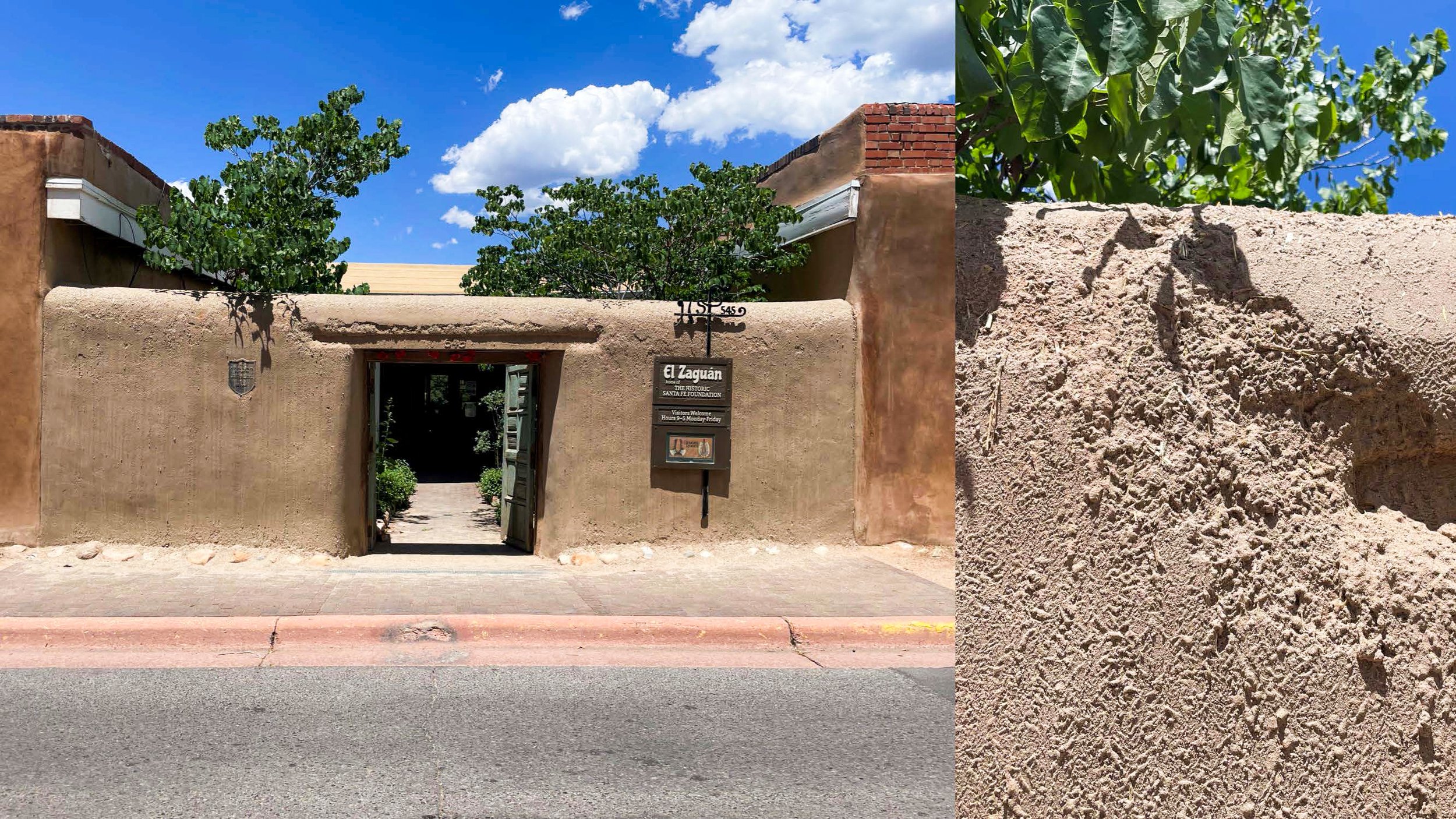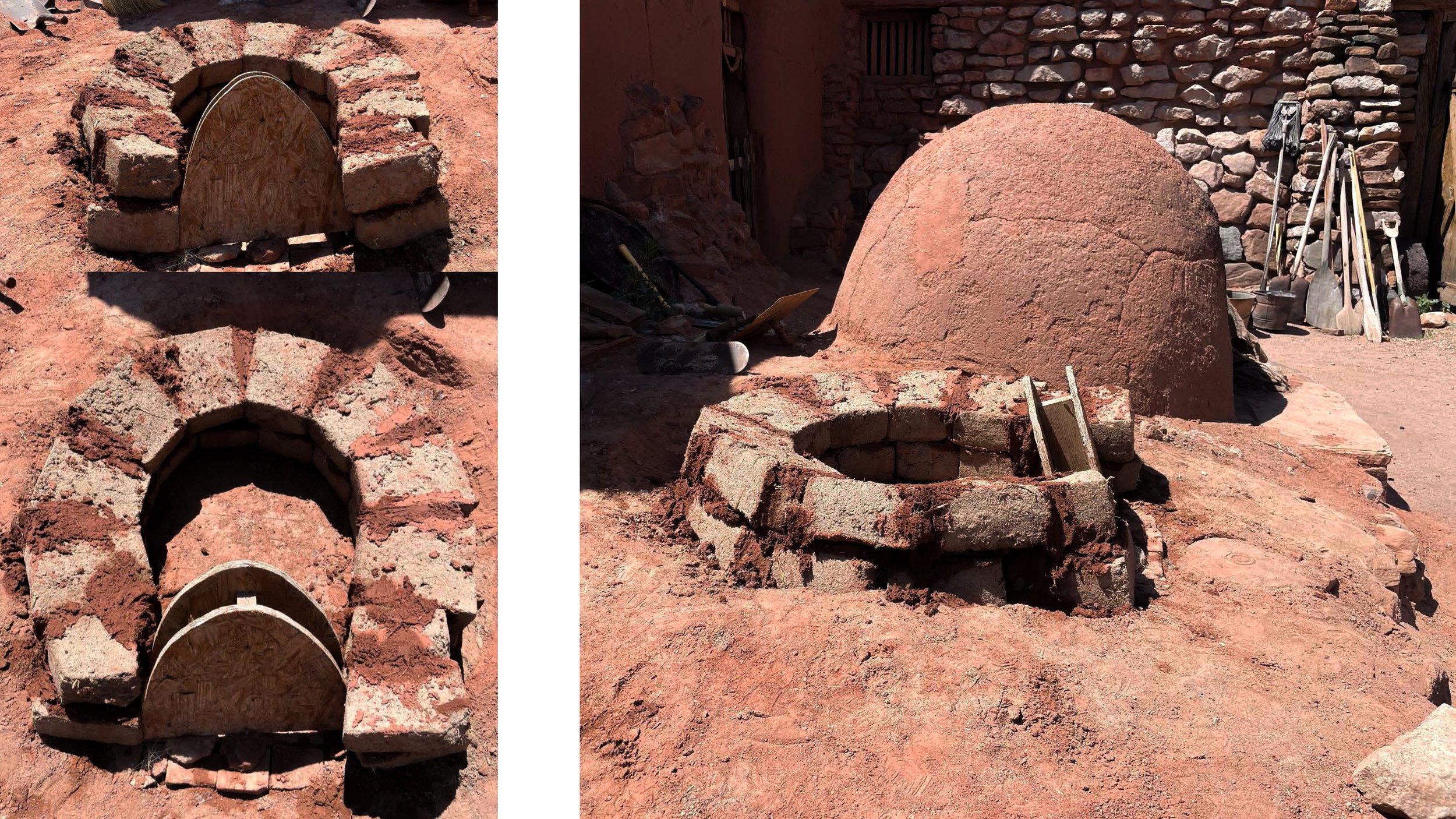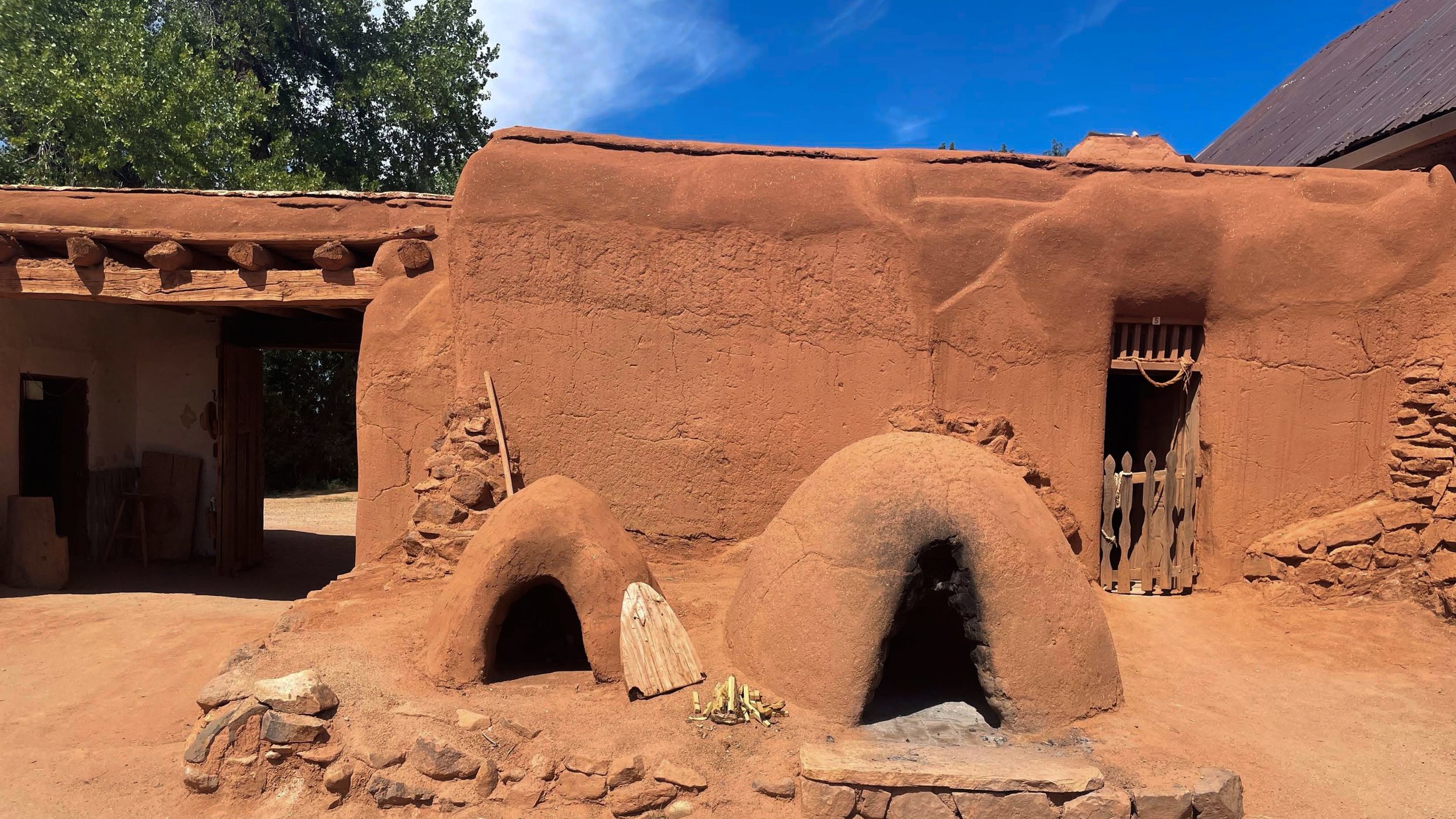The Rediscovery of America: Native Peoples and the Unmaking of U.S. History
By Ned Blackhawk
Yale University Press
Hardcover
616 pages
$35.00
Review by Pete Warzel
Ned Blackhawk, School for Advanced Research board director, Howard R. Lamar Professor of History and American Studies at Yale University, and the recipient of many professional awards for his research and writing, has given us a major work that explores the influence of Indigenous nations in and on the making of the United States. The research is extensive, the book eye-opening. The layers of influence and interaction are not what we learned in school, and fill in the blanks that make a more coherent whole of this nation’s history. Our pristine creation myth is perhaps not the real story.
Professor Blackhawk places a map on the inside cover and frontispiece for your first encounter with the extent of what he is about to present. It is a map of the present day United States, with the names of Native Nations located geographically, designating their pre-removal locations. The map is crowded, covered in Indigenous designations that succinctly makes the point of how extensive the original habitation of our country covered the entire landscape– and these are “select” Native Nations, not the entirety. The back inside cover and end page are a mirror image of this map, but detail the contemporary locations of state and federally recognized Native Nations. I am astounded at how many of the names are unfamiliar to me. That hole in our history is eloquently filled by Blackhawk in this serious work.
The two geographic areas where I have spent most of my life begin this history chronologically– New Mexico and the Southwest, and the northeast of Colonial France and England. I grew up in upstate New York, where the Iroquois Confederacy was familiar, the tribes legendary – Mohawk, Onondaga, Cayuga, Oneida, and Seneca. Their names mark the geography of the Finger Lakes, New York State counties, and towns – West Seneca. NY, was a hang-out for me, Cayuga Lake a destination. New Mexico and its nineteen pueblos are home to me now, their designation on the map warranting an expanded window to show the geographic locations spilling into Arizona.
Blackhawk’s work is so extensive it is difficult to compress in this short space. Again, reflecting the crowded visual of the map, we learn that in 1492 the Americas were home to 75 million native peoples. The history lost or overlooked is immense.
You will know the Spanish history that begins the book proper. The enslavement of indigenous people by Europeans as well as by other indigenous tribes is becoming more known in our exploration of the past in New Mexico. The same is true in the traditional narrative of the founding of our country, the colonial Northeast. Details that we might be unaware of are brought to light by Blackhawk’s research, such as the very poor military performance by George Washington, as a British commander during the French and Indian War (Seven Years War), pre-American revolution. There is the symbiotic relationship of the native nations with the French in Canada and into the northern Midwest that was built on trade and protection, throwing balance into chaos when the British defeated the French in the French and Indian War. The French left their names behind in the geography and cities (Detroit, Belle Fourche, Des Moines, LaCrosse, etc.), but also left, upon their withdrawal, a new power structure that Blackhawk argues was the spark of the revolution that created the United States.
It is just that notion of creation that is the heart of the argument of this book. Colonial expansion from the original British colonies, and the power displacements leading to Indigenous migrations, followed by colonist land expansion into the Ohio River Basin and further west, created a vacuum that the British government could not fill. Militias formed by the colonists took land from the displaced tribes and nations, and sparked a trend of intentional violence against native people, but also against British troops. The first shots of what would be the American revolution may have been fired in March, 1765, in Pennsylvania. The frontier settlers began raids on British supply trains that carried trade goods to the tribes, and “…laid siege to English forts in the region.” Blackhawk terms this rebellious, political movement “settler sovereignty”, that later in the year embraced urban protests against taxes and our school-taught history of the Boston Tea Party.
There are parallels to our troubled times today. Following the French and Indian War, really a global colonial power struggle, British colonists expanded west, and Pontiac’s War (an Odawa leader) began almost immediately. A vigilante group was formed in 1763, self-titled the Paxton Boys, renamed later the Black Boys. “An interior political culture was forming that disdained Indians and the eastern officials who supported them.” This sounds all too familiar, and although the name may be coincidence, it is eerily parallel to the contemporary neo-fascist group the Proud Boys, and the rise of fringe militias in our country. The mid-eighteenth century version was also racially biased. Benjamin Franklin, then a loyal British subject and member of the Pennsylvania colonial legislature, wrote a treatise in 1764, “ A Narrative of the Late Massacres in Lancaster County of a Number of Indians, FRIENDS of this Province” that declaimed “the only Crime seems to have been, that they had a reddish brown Skin, and Black hair.” He goes on to state that this kind of racial, violent behavior, “…is done by no civilized Nation.” Franklin was not re-elected to the legislature for his outspokenness, as the “interior” of the colonies became a new political force, and that too sounds distinctly familiar in our current politics.
The distrust of the settlers in the interior of Indigenous people now carried over to the British government, which supposedly protected westward expansion. Blackhawk cites a stunning paragraph in Thomas Jefferson’s Declaration of Independence, the founding document of the American Revolution that certainly has linguistic ties to our contentious monument that sits, or does not, at the center of the Santa Fe Plaza. The third to last grievance in the declaration against George III, King of England, states “He has excited domestic insurrections amongst us, and has endeavored to bring on the inhabitants of our frontiers, the merciless Indian Savages, whose known rule of warfare, is an undistinguished destruction of all ages, sexes and conditions.”
It surprises me that a discussion about this founding rhetoric never surfaced during the “battle” over the soldiers monument in Santa Fe, given the original “Savage Indians” statement carved in the monument, and then chiseled out in the night. We are indeed ignorant of our own history, or perhaps, selectively so, and begs the question what do we do with our memorialized founding document – change it, chisel the words from the paper? Ignore it?
Professor Blackhawk’s impeccable history urges us to ask these hard questions.
Governing by the initial Articles of Confederation, the new U.S structure and infrastructure was lacking, and became a driving force of the creation of the United States Constitution in 1787, more specifically addressing the relationship with, and management of, Native Nations. But the young, independent U.S. still faced uncertainties in its administration and application of its new laws. Looking to acquiring territory from foreign holdings in North America, the new U.S. administration needed to find a legal way to do so. “Could the federal government ‘purchase’ lands, and if so, how were these lands to be added to the Union? And what was to be done with the Native and non-U.S. peoples upon them?” Acquisition by war and conquest were recognized by the Constitution. But how was the new country to govern other circumstances? Treaties with the Native Nations became the country’s internal growth mechanism, accompanied certainly by the now repeated violence of settlers against Indians. Blackhawk argues that the treaty process in place set the path for relations with other countries and empires, and the further acquisition of territories to add to the growing boundaries of the new country. The U.S cut its diplomacy teeth on Indigenous Nations.
In 1860 the pattern of expansion and violence repeats as the nation drives towards Civil War. Union soldiers stationed in the west for Indian matters are recalled for the war, and volunteer militias take on the process, again, of “settler colonialism.” As Professor Blackhawk points out, through the words of General John Pope in orders to Colonel Henry Sibley, ‘it is my purpose utterly to exterminate the Sioux if I have the power to do so….” We cannot hide that direct statement behind the blur of time and history. This federal position is a stark, reprehensible admission. It is our country’s history, plain and chilling.
In a recoil from federal mismanagement of relationships, many tribes also seceded from the Union, forming treaties with the Confederate States. In 1864 a Cherokee secessionist, Stand Watie, became a brigadier general, and “…was the last Confederate general to surrender.” Other tribes and leaders sought to maintain the treaties made with the United States–the Union –abiding by a commitment to the law. As Blackhawk relates about Indian Territory, “…the war was becoming a civil war within the civil war.”
The period following the Civil War, into the twentieth century, and now into the twenty-first, is an alternative repeat of policies and friction. “Termination” in the 1950s and 60s was an attempt by the Bureau of Indian Affairs to terminate treaties, and so tribal lands, hinting at or promising individual compensation, and more direct control by the nations. Given the murky status of sovereignty and U.S. citizen status of tribal members, termination promised it all, including relocation programs for Indian families to urban areas This effort resulted in a significant protest movement, awareness by the general public, and a true step forward in self-management, and economic development through reversal of termination, and re-establishment of sovereign autonomy on the reservations. Professor Blackhawk cites the establishment of IAIA in Santa Fe, as a transformative experience in empowering this trend.
Ned Blackhawk has given us a major work of American history. It is straightforward, rigorous, non-apologetic, and non-accusative. (The facts and citations are damning on their own). The book is simply a presentation of a documented history that we have never entertained previously, one that fills in the blanks of time to give us a more complete story of our nation’s founding and evolution. Writing of the Cold War era, Professor Blackhawk states “For most Americans, Indian affairs seemed inconsequential.” Hopefully, that is no longer the case, but if so, perhaps this book, and its wide reach into our collective history, can help to change that.
If you can grapple with the early 18th century, and the mid-19th century quotations cited above, and believe that violent rhetoric is outdated in our country and world view, let us end with a quote by Mayor Herschel Melcher, Chamberlain, South Dakota, speaking about the urban migration of Native Americans as the treaties were offered “termination” in exchange for citizen rights and self-management: “We do not intend to let an Indian light around here at all. If they come in here it will be necessary to declare an open season on Indians….We do not want them and we see no reason why we should, and don’t want them in our schools.” This from the 1960s, not so long ago in our self-enlightened times. In other words, as Blackhawk points out. Indians threaten “the American way of life.” That is the very convoluted logic that we see today in the politicization of everything American.
Take the time to read and think through the work presented in this powerful history. It is well-worth your understanding of who and how we really are as a nation.






















